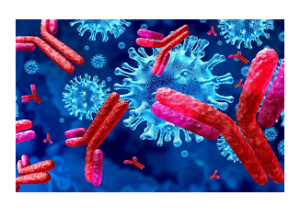
Assist Professor Ali Mansoor Al-Ameri
College of Medicine. University of Kerbala
Covid pandemic has been regarded as major health concern since its emergency in China, Wuhan, in December 2019. Globally, as of 21 September 2021, there have been about 229 million confirmed cases of COVID-19, including about 4,7 million deaths, reported to WHO. As of 20 September 2021, a total of about 5.8 billion vaccine doses have been administered [1]. Millions of victims were affected with varying morbidity and mortality outcomes. Immune response against the Causative agent, a certain strain of Coronavirus, was the single hope to eradicate the pandemic. That is why vaccine development targeted immune potentiation in the general population [2]. Meanwhile, the immunity itself contributes to most of the major pathological changes leading to a severe and critical course of covid infection with a deadly outcome. One of the well-known immune mechanisms is the cytokine storm and, more recently, the Bradykinin storm. Both of these mechanisms might lead to a state of Shock and major organ failure besides respiratory distress syndrome, which is characteristic of severe covid infection. Basically, the immune response is a balance between two arms; cell-mediated immunity (Th1 arm) and humoral immunity (Th2 arm). Different individuals have different ‘Combinations’ of these two arms with a certain degree of balance in between. It is well known that Th1 arm is responsible for the cytokine storm, which correlates with the disease severity. Cytokines are molecules that act like messengers among different immune cells. Cytokines include several families; interleukins are examples and hundreds of molecules [3]. Many Pro-Inflammatory cytokines, led by Interleukin 6 (IL6), contribute to the cytokine storm [4]. Apart from cytokine storm, immune-mediated mechanisms contribute to many of covid infection symptoms like fever, malaise and loss of appetite [5]. On the other hand, scientific evidence considers the Th2 arm of the immune response to be protective against covid infection. This part of the immune response offers antibody production. Antibodies play a major role in viral neutralization and also activate antibody-dependent cell-mediated cytotoxicity (ADCC) [6], a mechanism that leads to the killing of virus-infected cells by certain specialized immune cells. Owing to the above facts, the immune response is regarded as a two-edged weapon in case of covid infection. Furthermore, potential future therapeutic strategies of immune modifications (besides vaccine development) are still rich areas of research in order to eradicate this pandemic.
References
⦁ WHO covid dashboard. https://covid19.who.int/
⦁ Wu, Q., Dudley, M.Z., Chen, X. et al. Evaluation of the safety profile of COVID-19 vaccines: a rapid review. BMC Med 19, 173 (2021). https://doi.org/10.1186/s12916-021-02059-5
⦁ Turner MD, Nedjai B, Hurst T, Pennington DJ. Cytokines and chemokines: At the crossroads of cell signalling and inflammatory disease. Biochim Biophys Acta. 2014 Nov;1843(11):2563-2582. doi: 10.1016/j.bbamcr.2014.05.014. Epub 2014 Jun 2. PMID: 24892271.
⦁ Hu B, Huang S, Yin L. The cytokine storm and COVID-19. J Med Virol. 2021 Jan;93(1):250-256. doi: 10.1002/jmv.26232. Epub 2020 Sep 30. PMID: 32592501; PMCID: PMC7361342.
⦁ Brodin P. Immune determinants of COVID-19 disease presentation and severity. Nat Med. 2021 Jan;27(1):28-33. doi: 10.1038/s41591-020-01202-8. Epub 2021 Jan 13. PMID: 33442016.
⦁ Paces J, Strizova Z, Smrz D, Cerny J. COVID-19 and the immune system. Physiol Res. 2020 Jul 16;69(3):379-388. doi: 10.33549/physiolres.934492. Epub 2020 May 29. PMID: 32469225.





























































